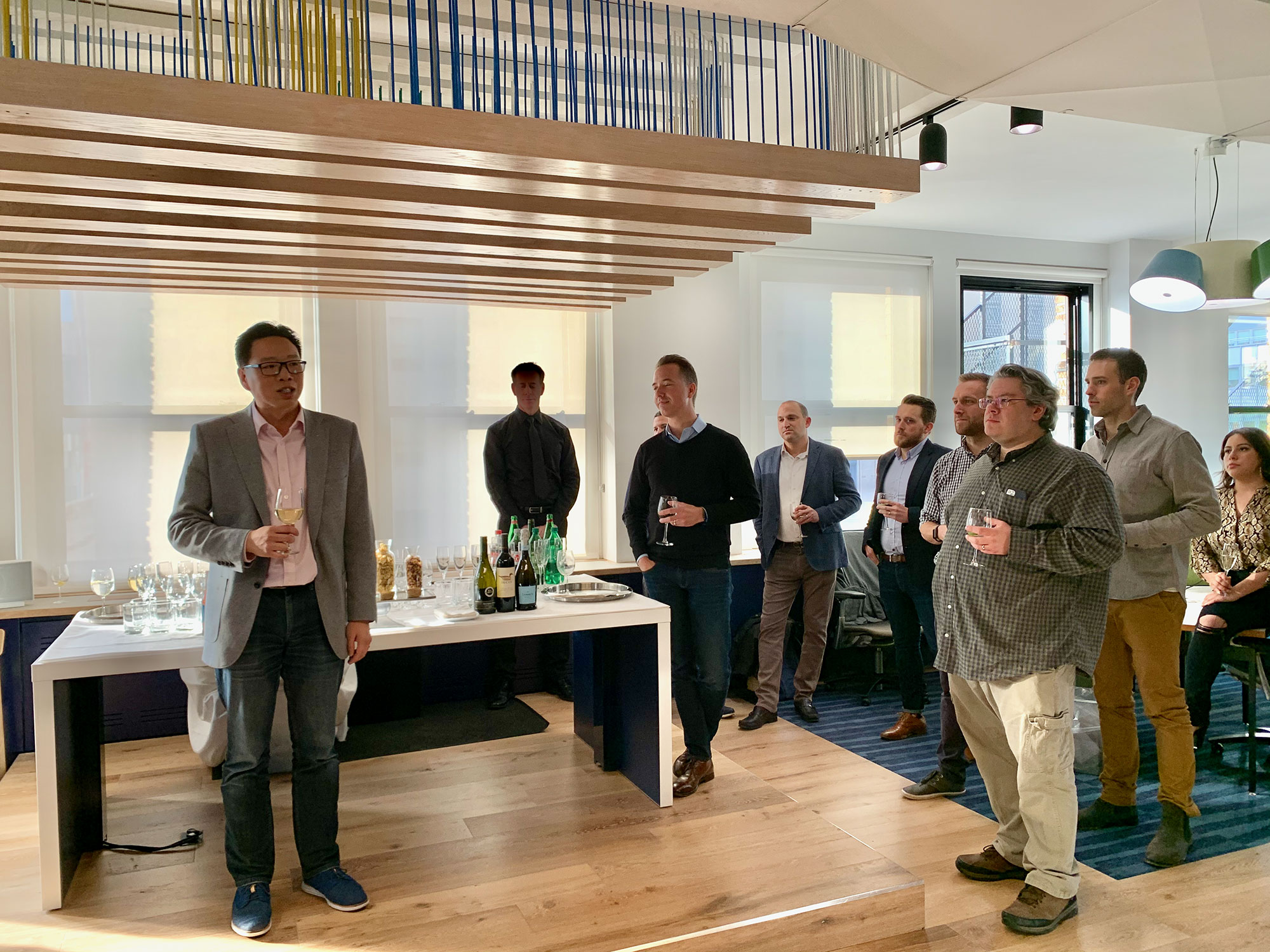From Options to RSU's: Reflections on an Acquisition, One Year On
It’s one year since Equinix acquired Packet. Here’s what I’ve learned about language, listening and learning.

Startups are all about the promise of the future. As such, they are both fragile and incredibly resilient. In my view, the source of this strength rests on one thing alone: people, and their desire to come together to create something new.
Acquisitions — at least of the Packet plus Equinix type — are also about the future. As such, they are similarly shaped by the people at the table and the ideas, vision, and values that energize and inspire them.
Through the Lens of People
Packet was acquired for $335 million. It’s an enormous amount of money, and by the accepted definition of Silicon Valley startup culture, a huge win. An “exit” as it were. In announcing the acquisition, my brother Zac said it felt more like an entrance than an exit. One year in, that sentiment is holding true — but just like any new venture, it’s nothing like any of us could have predicted.
When Packet joined Equinix last March, we brought with us (at the time) 141 team members, but also their partners, children, parents, pets, good habits, bad ones, and more. While the acquisition also included significant technology, brand, and other assets, it’s hard to look back and not see that the transaction centered around our humans.
The energy of anticipation was amplified by the swirling beginnings of the COVID-19 pandemic. What would we — and could we — do together?

Trading in Our Tokens
Last year all of Packet’s stock options — those monikers of startup optimism and potential — were traded in. In exchange we got RSU’s (Restricted Stock Units) but I’ve never believed that financial instruments alone are the most powerful motivation.
When people join you on a risky mission like a startup (or a transformative acquisition!) they are giving you their most valuable and scarce resource: time. As a mentor once told me: time is the most important asset that people have, but they never know how much of it remains. Use it wisely!
Joining a new family is scary, exciting and all too real.
Language
During our first integration meeting (before the pandemic), about 30 of us gathered around a collection of folding tables in Redwood City to start the process of finding our mojo. Sara Baack (who was soon to become my boss’s boss) said something that I’ve since reflected on dozens of times: language is important, but our words probably mean different things than we think.
It’s an easy statement to gloss over in the moment, but wow has it proven to be prescient!
Over the past year, we’ve probably spent more time trying to get on the same page and align than anything. Do you mean what I think you mean? Are we saying the same thing? Is your read on this situation the same as mine? How do you think / feel about this idea / problem / opportunity?
Gaining alignment has been significantly more difficult and intense because of our lockdown-imposed virtual modality. But looking back, Sara had put her finger on something important: we were using the same words, but understanding them in wildly different ways.
Revenue. Growth. People. Onboarding. Goal. Vision. Automation. Developer. Product. Sales. Support. Care. Infrastructure. Interconnection. Partner. Align. Milestone. Embargo.
Each of these should be easy to understand — they aren’t even culturally specific acronyms like “HTFN” (Hit the Friggin’ Number, evidently) or “K8s” — but it ends up that’s not quite true. Over the last year we’ve spent thousands of hours communicating and building a shared language. The progress is palpable, but if I could go back in time I would have spent more time early on trying harder to understand what my new colleagues meant, not just what they said.
Listening
This second point is obviously related to the first.
As a trained classical musician, I should know that the way you get a bunch of people to be in tune is not by playing louder, it’s by listening more closely and then adjusting to find that glorious sonic alignment.
Listening is a skill that we’ve all used a lot this past year, thanks to zillions of Zoom calls. But active listening is something quite different, and I’ve found it really difficult to do amidst the chaos of closing the acquisition, welcoming 150 new team members (as well as thousands of new colleagues across Equinix), and tackling the various challenges that face any business each and every day.
When it comes to acquisitions and the resulting journey, I think an active and intentional listening strategy is critical, especially for leadership. As leaders, we have the responsibility to carve out the time, build the trust and set the tone for a culture that values listening and flexibility.
At its essence, successful acquisitions (of which there are precious few examples) integrate two businesses, each with their own people, products and culture. Listening hard and being open to adjusting is a huge super power in life, but it’s been an especially critical mindset as we’ve found our way over the last year.
Learning
If you ever get the chance to lead your startup through an acquisition, I wish upon you a supportive board, a great CFO, a well-organized document repository, and the ability to stay up late tackling another set of due diligence items and never look tired in the morning!
But maybe most importantly, I wish you a great partner on the other side of the table. During the acquisition process, one of my longtime board members reminded me that companies are bought, not sold. So while there is certainly choice in the process, you’re inherently ceding control once you’re acquired.
My lesson is that’s a good thing, but it’s hard to change habits and mindsets. In our case, coming off the high of our acquisition marathon was difficult. Everyone was vibrating at an especially high frequency, reflecting the energy and optimism (as well as the uncertainty) of the future ahead of us.
What this environment didn’t leave enough room for was curiosity. As a very shiny new object, Packet (and now Equinix Metal), is often asked how it does things. After all, we were acquired in large part for the innovation blood that coursed through our veins!
It’s only over the last 3 to 6 months that I’ve been able to take the time to dig more deeply into what helped to make Equinix one of the most important companies in the digital world. Put another way, you don’t accidentally grow your revenue for 72 straight quarters.
Was our Exit Really an Entrance?
Acquisition closed, one year under the belt, new products and locations launched. What more needs doing? The answer, at least for us, is a lot. We’re truly just at the beginning of our journey together.
While things haven’t been perfect, I think that the thesis behind bringing Packet into the Equinix family is stronger than ever.
This journey first year post-acquisition has been challenging in many ways, but it’s also been thrilling. I’ve personally learned a lot, and I’m excited to apply a renewed focus on listening to my massively expanded list of colleagues, a hunger for learning about what makes our company truly tick, and an investment in a common language.
Who knows, maybe I’ll even help us HTFN. :)

Ready to kick the tires?
Use code DEPLOYNOW for $300 credit